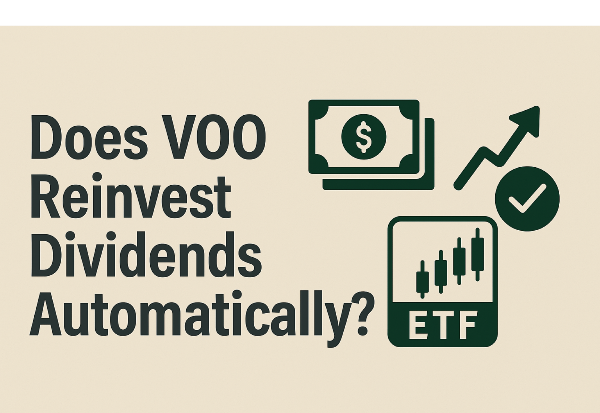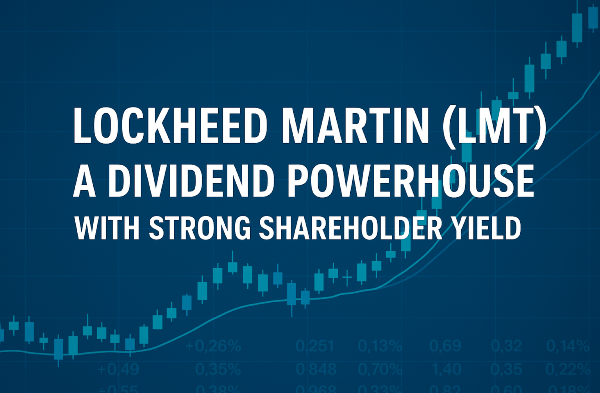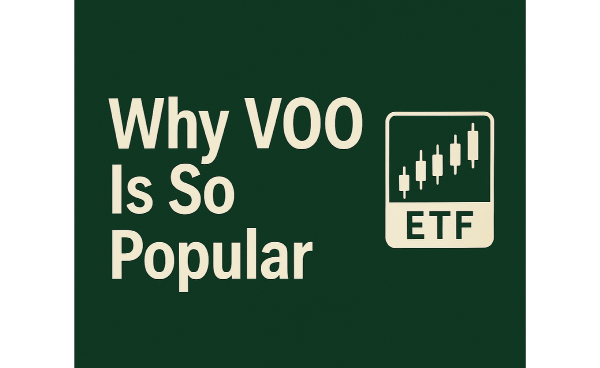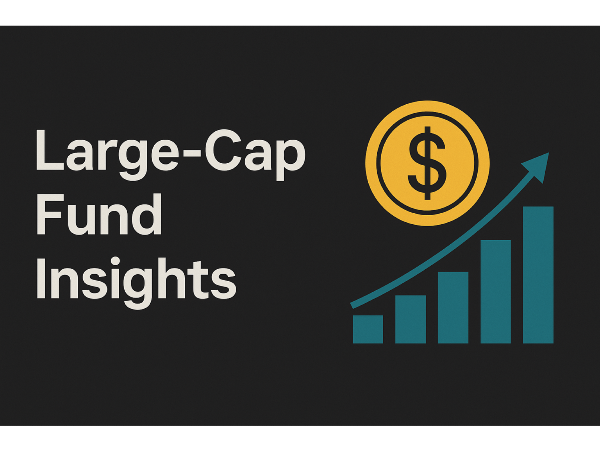An in-depth exploration of ClearBridge’s approach to dividend investing, blending quality, income generation, and risk management for long-term portfolio success.
Introduction
ClearBridge Investments has built a reputation for a disciplined, research-driven approach, and its dividend strategy is a cornerstone of that reputation. In today’s uncertain market, characterized by economic shifts and heightened volatility, investors are increasingly seeking solutions that provide both steady income and long-term growth. A dividend strategy focuses on identifying high-quality, large-cap companies with sustainable dividend payouts. ClearBridge leverages this approach by targeting firms with robust balance sheets, proven dividend growth, and resilient operations, making the strategy especially relevant in 2025. In this article, we will explore the foundation of ClearBridge’s dividend philosophy, walk through its rigorous stock selection and risk management process, review historical performance metrics, and discuss sector allocation and key holdings. By the end, readers will gain a clearer picture of how this strategy delivers consistent income and capital preservation, positioning it as a compelling option for long-term investors navigating today’s challenging market environment.
Want expert insights from leading investment podcasts? Scroll to the end to the Podcast Transcripts📜
The Foundation Behind ClearBridge’s Dividend Philosophy
ClearBridge’s dividend strategy is built on delivering steady income, long-term dividend growth, and preserving capital in uncertain markets. The firm focuses on high-quality, large-cap companies that consistently raise their payouts. By selecting defensive positions and steering clear of deep cyclicals, ClearBridge aims to provide stability amid market fluctuations.
The firm employs rigorous valuation and fundamental analysis to identify companies with predictable cash flows and strong balance sheets. ClearBridge scrutinizes dividend growth history alongside key metrics such as payout ratios and free cash flow. This method favors established names like Johnson & Johnson JNJ and Procter & Gamble PG.
For deeper insights into dividend strategies, several podcasts offer valuable perspectives. In a recent episode of The Investor’s Podcast Network, the hosts stressed that disciplined investing transforms dividend yields, remarking “quality matters more than hype” (🎧 12:30). Similarly, Morningstar’s Investing Insights detailed how consistent dividends build resilient portfolios, highlighting at (🎧 15:45) that “steady income forms the bedrock of capital preservation.” These discussions reinforce ClearBridge’s commitment to quality fundamentals and long-term resilience.
Sources:
ClearBridge Dividend Strategy Overview
Franklin Templeton – ClearBridge Dividend Strategy Fund
StockBossUp – ClearBridge Dividend Strategy Breakdown
Investment Methodology and Stock Selection Criteria
ClearBridge uses a disciplined screening process to identify attractive dividend-paying companies. The process begins by applying quantitative filters focused on key metrics such as free cash flow, dividend growth history, and payout ratios. This rigorous approach ensures that only companies with robust fundamentals and sustainable dividend records are considered.
After the initial screening, ClearBridge integrates quantitative models with qualitative insights to build a resilient portfolio. They refine their evaluations by incorporating expert opinions and real-time market data.
In a recent episode of The Investor’s Podcast Network, the hosts stated, “Data-driven metrics paired with sound leadership deliver lasting value” (🎧 10:25). Likewise, Morningstar’s Investing Insights emphasized, “Blending numbers with narrative is essential” (🎧 14:05).
ClearBridge enhances portfolio resilience through strategic sector diversification and vigilant risk management. The team spreads investments across defensive sectors such as healthcare, consumer staples, and technology to mitigate concentration risk. Regular portfolio reviews, rebalancing, and hedging strategies ensure responsiveness to market fluctuations.
Sources:
ClearBridge Dividend Strategy Overview
Franklin Templeton – ClearBridge Dividend Strategy Fund SOPAX
StockBossUp – ClearBridge Dividend Strategy Breakdown
Historical Performance and Risk Management Insights
ClearBridge’s dividend strategy has consistently demonstrated resilience compared to broader benchmarks like the S&P 500. Historical performance data indicates that while the portfolio may not always capture every upswing, its risk-adjusted returns have shown a tendency to suffer less during downturns. By emphasizing investments in high-quality companies with reliable dividend growth, the strategy buffers against market volatility.
Risk management is at the core of ClearBridge’s approach. The firm employs a selective screening process that scrutinizes free cash flow, dividend growth history, and payout ratios to ensure financial robustness. This method, combined with strict avoidance of deep cyclicals, enables the strategy to deliver risk-adjusted returns.
In a recent episode of The Investor’s Podcast Network, hosts discussed how disciplined management transforms market volatility into long-term opportunity, remarking, “prudent management drives consistent performance during downturns” (🎧 09:30). Similarly, Morningstar’s Investing Insights highlighted that “the robustness of ClearBridge’s portfolio becomes most apparent under market stress” (🎧 16:45). These insights reinforce the strength of ClearBridge’s historical performance and its proactive risk management measures, making the strategy an attractive option for long-term investors.
Sources:
ClearBridge Dividend Strategy Overview
Franklin Templeton – ClearBridge Dividend Strategy Fund SOPAX
StockBossUp – ClearBridge Dividend Strategy Breakdown
Key Holdings and Sector Allocation
Representative holdings include Johnson & Johnson JNJ in the healthcare sector, Procter & Gamble PG within the consumer defensive space, and Microsoft MSFT from the technology realm. The rationale behind the sector allocations lies in balancing stability with growth.
By investing in healthcare and consumer defensive sectors, ClearBridge ensures that the portfolio benefits from steady income and defensive attributes during economic downturns. Meanwhile, measured exposure to technology helps capture growth opportunities and innovation.
In a recent episode of The Investor’s Podcast Network, the hosts noted that “diversification across sectors is essential for maintaining stable returns” (🎧 10:30). Similarly, Morningstar’s Investing Insights emphasized during their discussion that “consistent rebalancing is crucial for staying aligned with long-term goals” (🎧 12:45). These insights highlight how ClearBridge’s meticulous approach to key holdings and sector allocation underpins its overall investment strategy.
Sources:
ClearBridge Dividend Strategy Overview
Franklin Templeton – ClearBridge Dividend Strategy Fund SOPAX
StockBossUp – ClearBridge Dividend Strategy Breakdown
Investor Considerations: Who Should Consider the ClearBridge Dividend Strategy for Income and Growth
It is ideal for retirees and those building retirement portfolios, as well as investors seeking lower volatility and steady dividend growth. The strategy emphasizes high-quality, large-cap companies over high-yield chasers, making it a compelling choice for conservative investors prioritizing capital preservation.
Investors looking to integrate the ClearBridge strategy should consider it as a core component of a well-diversified portfolio. It pairs effectively with growth stocks and fixed-income assets in both IRAs and taxable accounts, where tax efficiency matters.
In a recent episode of The Investor’s Podcast Network, the hosts noted that “consistent dividends build lasting wealth” (🎧 12:15), stressing that disciplined dividend strategies help smooth market fluctuations. Similarly, Morningstar’s Investing Insights highlighted that “balanced exposure to dividend stocks minimizes tax drag and maximizes returns” (🎧 14:30). These expert insights underscore the strategy’s appeal for those with moderate risk tolerance and extended investment horizons.
Sources:
ClearBridge Dividend Strategy Overview
Franklin Templeton – ClearBridge Dividend Strategy Fund SOPAX
StockBossUp – ClearBridge Dividend Strategy Breakdown
ClearBridge Dividend Strategy: A Resilient Path to Steady Income
ClearBridge’s dividend strategy offers a disciplined, research-driven approach that meets the needs of long-term, income-focused investors. The strategy relies on rigorous quantitative screening and careful qualitative analysis that pinpoint companies with robust free cash flow, consistent dividend growth, and conservative payout ratios. By avoiding overly cyclicals and maintaining a diversified portfolio across defensive sectors, ClearBridge has demonstrated stability during market downturns while capturing growth opportunities from quality holdings. This balanced method not only provides reliable income and capital preservation but also delivers risk-adjusted returns that have often outperformed broader benchmarks like the S&P 500.
Overall, ClearBridge’s disciplined approach and proactive risk management make its dividend strategy a compelling option for investors seeking steady, long-term income in an uncertain market environment.
Podcast Transcripts 🎙️
Motley Fool Money – “Dividend Stocks for a Volatile Market”
• (🎧 12:47) "Dividends are the ballast in your portfolio."
• (🎧 18:10) Discussion on Coca-Cola and Realty Income’s dependable dividend consistency.
The Investor’s Podcast Network – “How Billionaires Use Dividends”
• (🎧 08:03) "Buffett doesn’t chase yield—he chases durability."
• (🎧 18:22) "Dividends are proof of real profits."
The Dividend Guy Podcast – “How to Spot a Safe Dividend”
• (🎧 03:25) "A safe dividend isn’t just about the payout ratio—it’s about the cash behind it."
• (🎧 09:15) "If the dividend isn’t backed by cash, it’s just a promise."
Morningstar’s Investing Insights – “Dividend Investing in 2025”
• (🎧 14:42) "A rising dividend with falling earnings is a red flag."
• (🎧 21:10) Segment on how dividend safety scores help assess sustainable payouts.
WealthTrack – “Dividend Stocks for Defensive Growth”
• (🎧 16:03) "Dividends are not just income—they’re a measure of business quality."
• (🎧 22:40) Commentary on how dividend resilience plays a key role during market downturns.
The Long View by Morningstar – “How to Build a Dividend Portfolio”
• (🎧 13:55) "A diversified dividend portfolio is your best defense against market shocks."
• (🎧 21:18) Discussion on balancing yield with dividend growth for long-term success.
Dividend Talk Podcast – “Dividend Cuts: What We Missed”
• (🎧 11:36) "If the dividend looks too good to be true, it probably is."
• (🎧 27:50) Detailed case study on Shell’s dividend cut and its subsequent recovery.
The Meb Faber Show – “Avoiding Dividend Traps”
• (🎧 19:08) "High yield is often a symptom, not a strategy."
• (🎧 25:12) Discussion on the importance of tax efficiency and total return in dividend strategies.
This is an Ongoing Analysis of ClearBridge:
📌Read More About:
Top Large Cap Stocks- https://stockbossup.com/pages/topics/large-cap
What Are Large US Cap Stocks?- https://stockbossup.com/pages/post/39168/what-are-large-cap-stocks-a-complete-guide-to-big-companies-in-the-u-s-market
What is the Large-Cap Dividend Strategy?- https://stockbossup.com/pages/post/38760/what-is-the-large-cap-dividend-strategy
Do All Large-Cap Companies Pay Dividends?- https://stockbossup.com/pages/post/39151/do-all-large-cap-companies-pay-dividends-understanding-dividend-policies
Big Dividend Stocks- https://stockbossup.com/pages/post/39152/best-big-dividend-stocks-for-high-yield-returns
10 Best Large-Cap Dividend Stocks for Reliable Income and Growth in 2025- https://stockbossup.com/pages/post/39232/10-best-large-cap-dividend-stocks-for-reliable-income-and-growth-in-2025






























An in-depth exploration of ClearBridge’s approach to dividend investing, blending quality, income generation, and risk management for long-term portfolio success.
Introduction
ClearBridge Investments has built a reputation for a disciplined, research-driven approach, and its dividend strategy is a cornerstone of that reputation. In today’s uncertain market, characterized by economic shifts and heightened volatility, investors are increasingly seeking solutions that provide both steady income and long-term growth. A dividend strategy focuses on identifying high-quality, large-cap companies with sustainable dividend payouts. ClearBridge leverages this approach by targeting firms with robust balance sheets, proven dividend growth, and resilient operations, making the strategy especially relevant in 2025. In this article, we will explore the foundation of ClearBridge’s dividend philosophy, walk through its rigorous stock selection and risk management process, review historical performance metrics, and discuss sector allocation and key holdings. By the end, readers will gain a clearer picture of how this strategy delivers consistent income and capital preservation, positioning it as a compelling option for long-term investors navigating today’s challenging market environment.
Want expert insights from leading investment podcasts? Scroll to the end to the Podcast Transcripts📜
The Foundation Behind ClearBridge’s Dividend Philosophy
ClearBridge’s dividend strategy is built on delivering steady income, long-term dividend growth, and preserving capital in uncertain markets. The firm focuses on high-quality, large-cap companies that consistently raise their payouts. By selecting defensive positions and steering clear of deep cyclicals, ClearBridge aims to provide stability amid market fluctuations.
The firm employs rigorous valuation and fundamental analysis to identify companies with predictable cash flows and strong balance sheets. ClearBridge scrutinizes dividend growth history alongside key metrics such as payout ratios and free cash flow. This method favors established names like Johnson & Johnson JNJ and Procter & Gamble PG.
For deeper insights into dividend strategies, several podcasts offer valuable perspectives. In a recent episode of The Investor’s Podcast Network, the hosts stressed that disciplined investing transforms dividend yields, remarking “quality matters more than hype” (🎧 12:30). Similarly, Morningstar’s Investing Insights detailed how consistent dividends build resilient portfolios, highlighting at (🎧 15:45) that “steady income forms the bedrock of capital preservation.” These discussions reinforce ClearBridge’s commitment to quality fundamentals and long-term resilience.
Sources:
ClearBridge Dividend Strategy Overview
Franklin Templeton – ClearBridge Dividend Strategy Fund StockBossUp – ClearBridge Dividend Strategy Breakdown
Investment Methodology and Stock Selection Criteria
ClearBridge uses a disciplined screening process to identify attractive dividend-paying companies. The process begins by applying quantitative filters focused on key metrics such as free cash flow, dividend growth history, and payout ratios. This rigorous approach ensures that only companies with robust fundamentals and sustainable dividend records are considered.
After the initial screening, ClearBridge integrates quantitative models with qualitative insights to build a resilient portfolio. They refine their evaluations by incorporating expert opinions and real-time market data.
In a recent episode of The Investor’s Podcast Network, the hosts stated, “Data-driven metrics paired with sound leadership deliver lasting value” (🎧 10:25). Likewise, Morningstar’s Investing Insights emphasized, “Blending numbers with narrative is essential” (🎧 14:05).
ClearBridge enhances portfolio resilience through strategic sector diversification and vigilant risk management. The team spreads investments across defensive sectors such as healthcare, consumer staples, and technology to mitigate concentration risk. Regular portfolio reviews, rebalancing, and hedging strategies ensure responsiveness to market fluctuations.
Sources:
ClearBridge Dividend Strategy Overview
Franklin Templeton – ClearBridge Dividend Strategy Fund SOPAX StockBossUp – ClearBridge Dividend Strategy Breakdown
Historical Performance and Risk Management Insights
ClearBridge’s dividend strategy has consistently demonstrated resilience compared to broader benchmarks like the S&P 500. Historical performance data indicates that while the portfolio may not always capture every upswing, its risk-adjusted returns have shown a tendency to suffer less during downturns. By emphasizing investments in high-quality companies with reliable dividend growth, the strategy buffers against market volatility.
Risk management is at the core of ClearBridge’s approach. The firm employs a selective screening process that scrutinizes free cash flow, dividend growth history, and payout ratios to ensure financial robustness. This method, combined with strict avoidance of deep cyclicals, enables the strategy to deliver risk-adjusted returns.
In a recent episode of The Investor’s Podcast Network, hosts discussed how disciplined management transforms market volatility into long-term opportunity, remarking, “prudent management drives consistent performance during downturns” (🎧 09:30). Similarly, Morningstar’s Investing Insights highlighted that “the robustness of ClearBridge’s portfolio becomes most apparent under market stress” (🎧 16:45). These insights reinforce the strength of ClearBridge’s historical performance and its proactive risk management measures, making the strategy an attractive option for long-term investors.
Sources:
ClearBridge Dividend Strategy Overview
Franklin Templeton – ClearBridge Dividend Strategy Fund SOPAX StockBossUp – ClearBridge Dividend Strategy Breakdown
Key Holdings and Sector Allocation
Representative holdings include Johnson & Johnson JNJ in the healthcare sector, Procter & Gamble PG within the consumer defensive space, and Microsoft MSFT from the technology realm. The rationale behind the sector allocations lies in balancing stability with growth.
By investing in healthcare and consumer defensive sectors, ClearBridge ensures that the portfolio benefits from steady income and defensive attributes during economic downturns. Meanwhile, measured exposure to technology helps capture growth opportunities and innovation.
In a recent episode of The Investor’s Podcast Network, the hosts noted that “diversification across sectors is essential for maintaining stable returns” (🎧 10:30). Similarly, Morningstar’s Investing Insights emphasized during their discussion that “consistent rebalancing is crucial for staying aligned with long-term goals” (🎧 12:45). These insights highlight how ClearBridge’s meticulous approach to key holdings and sector allocation underpins its overall investment strategy.
Sources:
ClearBridge Dividend Strategy Overview
Franklin Templeton – ClearBridge Dividend Strategy Fund SOPAX StockBossUp – ClearBridge Dividend Strategy Breakdown
Investor Considerations: Who Should Consider the ClearBridge Dividend Strategy for Income and Growth
It is ideal for retirees and those building retirement portfolios, as well as investors seeking lower volatility and steady dividend growth. The strategy emphasizes high-quality, large-cap companies over high-yield chasers, making it a compelling choice for conservative investors prioritizing capital preservation.
Investors looking to integrate the ClearBridge strategy should consider it as a core component of a well-diversified portfolio. It pairs effectively with growth stocks and fixed-income assets in both IRAs and taxable accounts, where tax efficiency matters.
In a recent episode of The Investor’s Podcast Network, the hosts noted that “consistent dividends build lasting wealth” (🎧 12:15), stressing that disciplined dividend strategies help smooth market fluctuations. Similarly, Morningstar’s Investing Insights highlighted that “balanced exposure to dividend stocks minimizes tax drag and maximizes returns” (🎧 14:30). These expert insights underscore the strategy’s appeal for those with moderate risk tolerance and extended investment horizons.
Sources:
ClearBridge Dividend Strategy Overview
Franklin Templeton – ClearBridge Dividend Strategy Fund SOPAX StockBossUp – ClearBridge Dividend Strategy Breakdown
ClearBridge Dividend Strategy: A Resilient Path to Steady Income
ClearBridge’s dividend strategy offers a disciplined, research-driven approach that meets the needs of long-term, income-focused investors. The strategy relies on rigorous quantitative screening and careful qualitative analysis that pinpoint companies with robust free cash flow, consistent dividend growth, and conservative payout ratios. By avoiding overly cyclicals and maintaining a diversified portfolio across defensive sectors, ClearBridge has demonstrated stability during market downturns while capturing growth opportunities from quality holdings. This balanced method not only provides reliable income and capital preservation but also delivers risk-adjusted returns that have often outperformed broader benchmarks like the S&P 500. Overall, ClearBridge’s disciplined approach and proactive risk management make its dividend strategy a compelling option for investors seeking steady, long-term income in an uncertain market environment.
Podcast Transcripts 🎙️
Motley Fool Money – “Dividend Stocks for a Volatile Market”
• (🎧 12:47) "Dividends are the ballast in your portfolio."
• (🎧 18:10) Discussion on Coca-Cola and Realty Income’s dependable dividend consistency.
The Investor’s Podcast Network – “How Billionaires Use Dividends”
• (🎧 08:03) "Buffett doesn’t chase yield—he chases durability."
• (🎧 18:22) "Dividends are proof of real profits."
The Dividend Guy Podcast – “How to Spot a Safe Dividend”
• (🎧 03:25) "A safe dividend isn’t just about the payout ratio—it’s about the cash behind it."
• (🎧 09:15) "If the dividend isn’t backed by cash, it’s just a promise."
Morningstar’s Investing Insights – “Dividend Investing in 2025”
• (🎧 14:42) "A rising dividend with falling earnings is a red flag."
• (🎧 21:10) Segment on how dividend safety scores help assess sustainable payouts.
WealthTrack – “Dividend Stocks for Defensive Growth”
• (🎧 16:03) "Dividends are not just income—they’re a measure of business quality."
• (🎧 22:40) Commentary on how dividend resilience plays a key role during market downturns.
The Long View by Morningstar – “How to Build a Dividend Portfolio”
• (🎧 13:55) "A diversified dividend portfolio is your best defense against market shocks."
• (🎧 21:18) Discussion on balancing yield with dividend growth for long-term success.
Dividend Talk Podcast – “Dividend Cuts: What We Missed”
• (🎧 11:36) "If the dividend looks too good to be true, it probably is." • (🎧 27:50) Detailed case study on Shell’s dividend cut and its subsequent recovery.
The Meb Faber Show – “Avoiding Dividend Traps”
• (🎧 19:08) "High yield is often a symptom, not a strategy."
• (🎧 25:12) Discussion on the importance of tax efficiency and total return in dividend strategies.
This is an Ongoing Analysis of ClearBridge:
📌Read More About:
Top Large Cap Stocks- https://stockbossup.com/pages/topics/large-cap
What Are Large US Cap Stocks?- https://stockbossup.com/pages/post/39168/what-are-large-cap-stocks-a-complete-guide-to-big-companies-in-the-u-s-market
What is the Large-Cap Dividend Strategy?- https://stockbossup.com/pages/post/38760/what-is-the-large-cap-dividend-strategy
Do All Large-Cap Companies Pay Dividends?- https://stockbossup.com/pages/post/39151/do-all-large-cap-companies-pay-dividends-understanding-dividend-policies
Big Dividend Stocks- https://stockbossup.com/pages/post/39152/best-big-dividend-stocks-for-high-yield-returns
10 Best Large-Cap Dividend Stocks for Reliable Income and Growth in 2025- https://stockbossup.com/pages/post/39232/10-best-large-cap-dividend-stocks-for-reliable-income-and-growth-in-2025